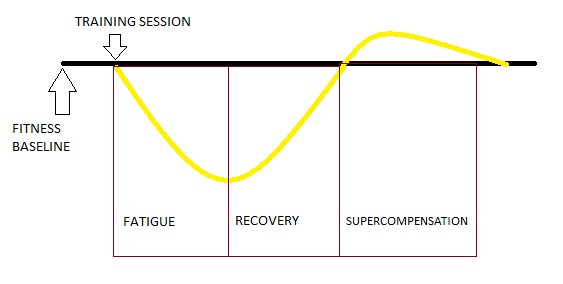Adaptation
Adaptation is the process of adjusting to a physical, environmental, or psychological stress. From a physiological perspective, the body perceives exercise as a stress or something which throws it out of balance. If we consistently apply this exercise stress to the body it will physiologically adapt so it can better handle the stress and this is the process of getting fit. It is essentially the body trying to protect itself which results in increased fitness.
Selye (1956) described a theoretical model summarising this adaptation process. His theory is based on the General Adaptation Syndrome (GAS). The GAS proposes that the body’s physiological response to a stress is the same regardless of the stressor (Turner 2011). According to the GAS, stress causes a temporary reduction in performance or function which is followed by an adaptation that improves the body’s performance or function. This improved response is often called the ‘supercompensation’ theory of training and it is illustrated in the figure below.

When the player completes a strength training unit for example, the immediate response following the unit is fatigue. The player cannot display the same pre-training strength levels in this fatigue period. The muscles trained may be low in fuel (glycogen) and may also be needing tissue repair because of the muscle damage that normally occurs when training. After a period of recovery time, muscle fuel stores will be replenished and repair of damaged tissue takes place. If the training stimulus and recovery time are sufficient, the player’s strength levels can increase above their previous baseline level. This is called the supercompensation phase of training. The theory further suggests that if the player’s muscular system does not receive another stimulus (a training unit) within this supercompensation window, then their strength levels will re-adjust to the former baseline level of strength. Thus, according to this theoretical model, the principle of adaptation is best achieved by allowing a sufficient period of recovery to ensure that the player will be ready to train and benefit from the next training unit. The period of recovery will vary between players and will vary depending on the workload already completed (McLester et al, 2008, Hennessy, 2011). The GAS theory of adaptation is a well-established theory however other theories have been proposed and one of the most popular is the fitness-fatigue model.